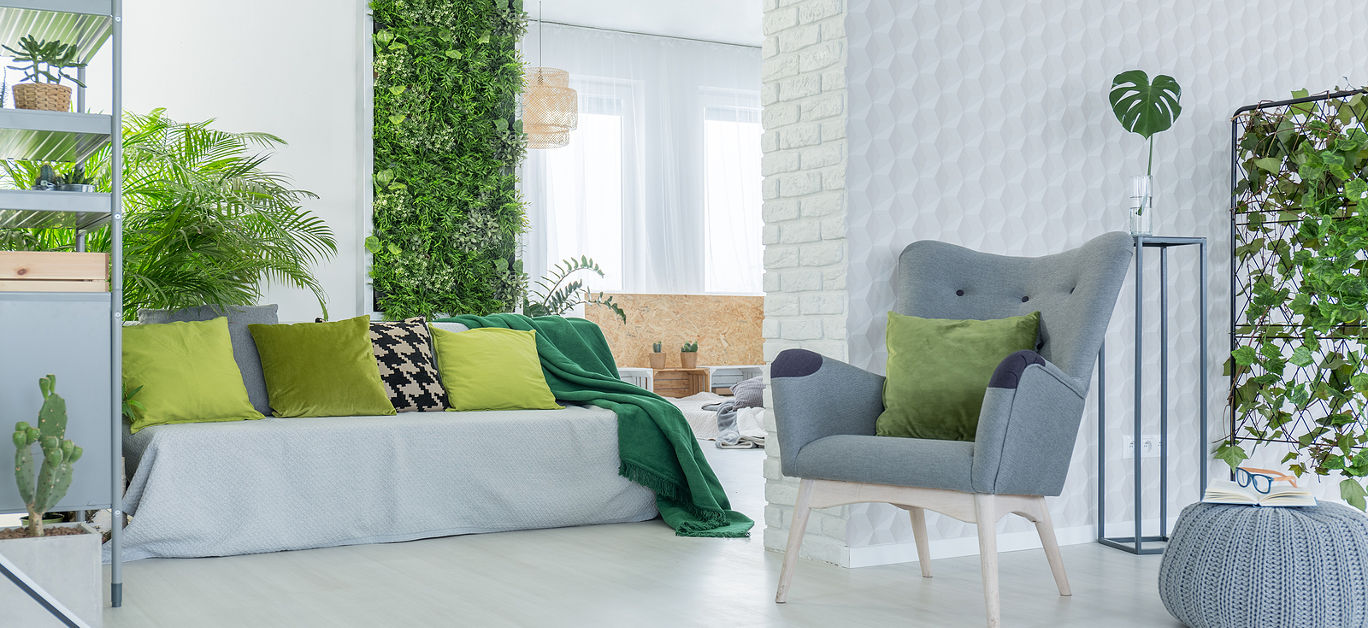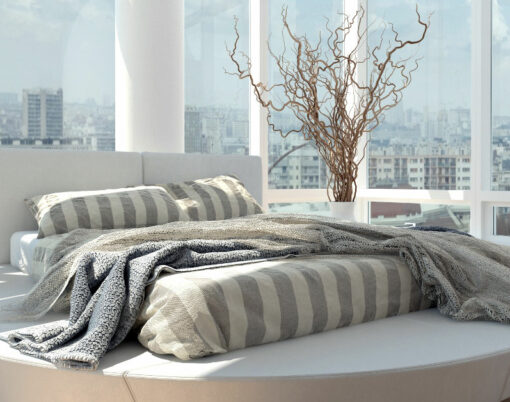2023 has seen the emergence of indoor plant walls. You’ve probably seen them growing in office spaces, five-star hotels and Michelin-starred restaurants. But now, these must-have feature walls are making their way into luxury homes across the country.
Plant walls are an important part of the ‘biophilic design’ (taken from the word ‘biophilia’; the human need to connect with nature). Biophilic homes are decorated with potted plants, textures, colours and other natural elements that connect the indoors with the outside.
What better way to do this than with a hand-picked selection of plants? Choose foliage in a variety of colours and shapes to bring out the best in your organic decor. By bringing the outdoors in, you can make your home more harmonious.
What is a plant wall?
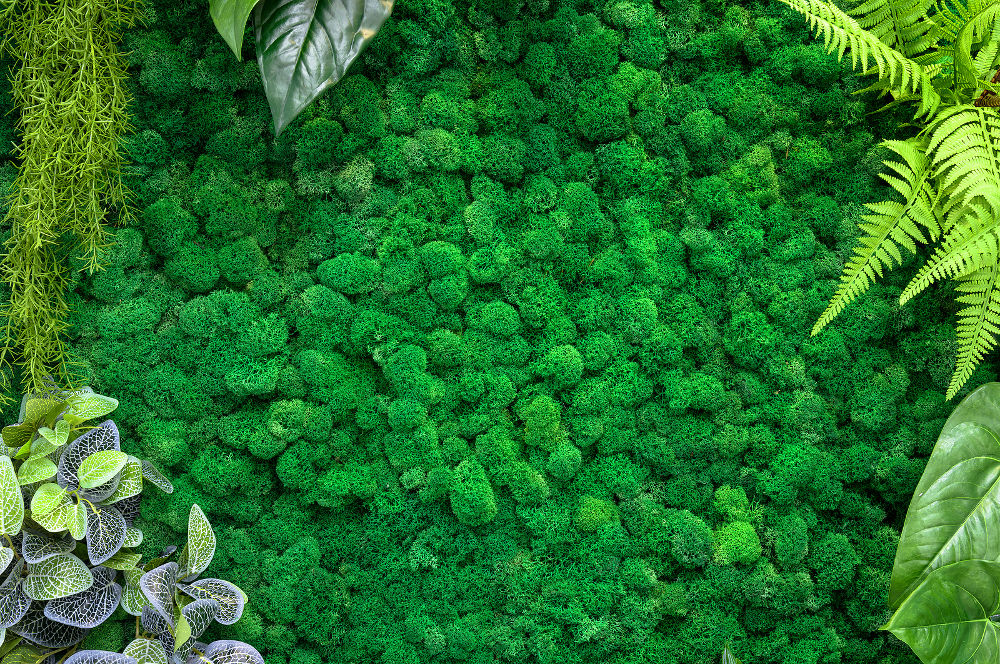
Plant walls are a vertical arrangement of indoor foliage.
Going by many different names, from living walls to vertical gardens, these arrangements are a creative way to incorporate more greenery into interior spaces.
The best part about cultivating a plant wall is that they’re personal to each household. Make your garden as big or small as you like; arrange individual plants close together or hang ivy from the ceiling and let it drape.
They can be composed of various plants such as succulents, pothos, philodendrons, dracaena, anthurium, or ferns. In order to thrive, these plants need a suitable growing medium, a compartment (planters or pockets attached to the wall), a bright area with sufficient light, and regular watering and fertilising.
Aside from being a beautiful design fixture, plant walls can purify indoor air by absorbing carbon dioxide and pollutants. They can even stabilise the temperature of your home by making it cooler.
Look after your foliage regularly and it’ll look after you too!
What are the different types of indoor plant walls?
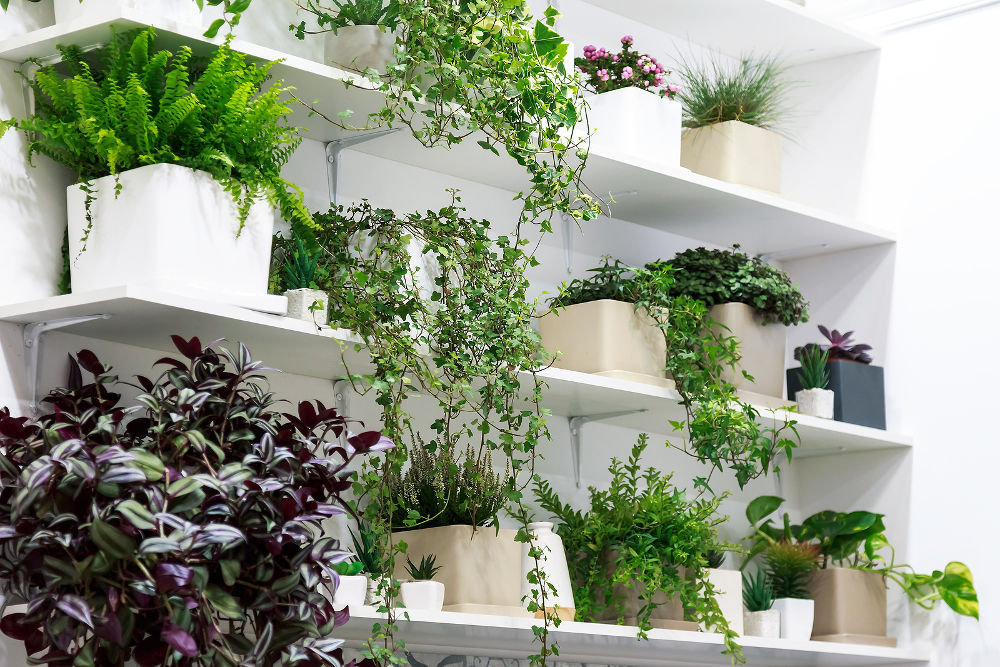
No two plant walls are alike. However, there are many similarities in the way they’re configured.
Hanging planters
If you’re living in a small home, hanging planters are a unique, space-saving way to achieve the ‘biophilic aesthetic. These systems consist of a series of planters suspended from a horizontal surface, such as a ceiling or beam.
Hanging planters add colour to your home without occupying wall or floor space. They’re especially effective near windows, where plants can get the most light.
Vertical garden systems
The most common kind of plant wall, vertical gardens consist of multiple planters mounted on a vertical surface like an indoor wall (or a fence, if they’re outdoors!)
Vertical gardens can be made from a variety of materials, including wood, metal, and plastic, offering homeowners a great deal of design flexibility. You can make them as intricate or simple as your budget allows.
DIY plant shelves
For those who enjoy crafting, DIY plant shelves are a wonderful way to personalise your space.
You can create a plant display with a small amount of wood, a hammer, a saw, and some creative thinking! One simple design uses 4×4 posts for a sturdy structure, with fence pickets as shelves supported by 2x4s.
It doesn’t require expensive tools or complicated cuts, making it entirely accessible to DIY beginners. Once you’ve chosen your preferred type of wood – oak, cedar or spruce – you can add copper post caps or give your plant shelf a glossy finish.
How to select the right indoor plants
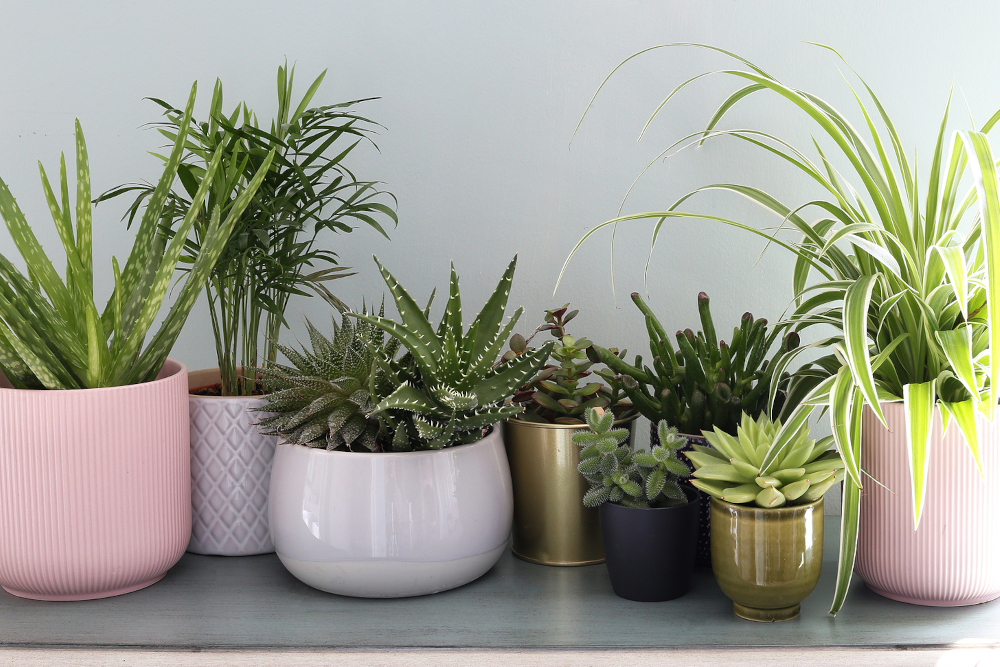
So, what’s the key to creating a successful, thriving plant wall?
Understand your environment
Whether you live in a 4-bedroom house in the country or a new 2-bedroom flat in Manchester city centre, each property will have different levels of light exposure.
Determining if your vertical garden will be in bright light, partial light, or shade will greatly influence your plant choices. You’ll also need to understand how your plants will be supported.
Will they be in soil or growing media? How will they be watered – by hand or through an irrigation system? Indoor conditions may change throughout the year, but if your home is prone to higher humidity and warmer temperatures, you may want to consider tropical plants.
Plant selection
Based on the conditions and needs of your space, here are some of our top recommended plants for vertical gardens:
Pothos (Epipremnum)
Epipremnum plants have beautiful, heart-shaped leaves and can tolerate a wide range of light conditions, from partial shade to direct sunlight. These low-maintenance houseplants are undemanding and a great plant for beginners.
Ferns
While ferns require a little more moisture than standard houseplants, their quick growth and adaptability make them an excellent choice for vertical gardens.
Philodendron
Another plant with beautiful, heart-shaped leaves, philodendron is a climber that doesn’t need much attention! It grows well in bright and indirect light.
Air plants (Tillandsia)
Unique in their ability to absorb moisture and nutrients through their leaves, air plants are perfect for bright, indirect light conditions and require minimal care.
Baby’s Tears (Soleirolia soleirolii)
The Soleirolia soleirolii plant resembles ‘moss’ with its tiny, bright green leaves. It prefers moderate light levels (not too bright!) and thrives in a more humid environment.
Bringing it all together
A plant wall is not just a stylish addition to your home; it’s a living, breathing feature that connects you with nature. Whether you’re in a country house or a city centre flat, a plant wall can transform your living space into a sanctuary of tranquillity and natural beauty.












